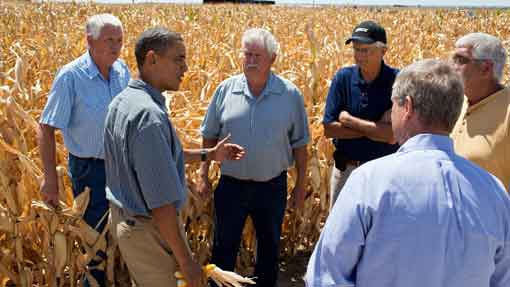US farm bill ends direct payments to farmers

US President Barack Obama has signed off on a $956bn (£582bn) farm bill.
About 15% of the money will be spent on subsidies and crop insurance, while 80% will be spent on food stamps for hard-up Americans.
Farm-related spending will be roughly $14bn (£8.5bn) a year for the next decade, roughly a quarter of the EU’s €59bn budget (£49bn) for natural resources, which includes direct payments and rural development.
The new bill will end subsidies paid directly to farmers and landowners, add more crop insurance options, offer dairy farmers a production margin protection scheme and cut back a food-stamp programme.
The main features of the Agriculture Bill
- Direct payments to farmers and landowners, worth about $4.5bn a year, will be cut
- Crop farmers can choose price protection at a county or individual level in case the commodity prices fall below a certain level
- Dairy farmers can enter a production margin protection scheme, based on the difference between the milk price and their feed cost, but no supply controls have been introduced, despite a lot of discussion during the bill’s progress
- A disaster assistance program for livestock farmers will become permanent, covering losses from adverse weather, attacks from reintroduced animals like wolves, and forage loss from drought or fire
- The government will pay 65% of crop insurance premiums as part of the state-subsidised programme
President Obama signed the bill on Friday at Michigan State University, at the heart of one of USA’s largest farming regions, after the Senate passed the bill by 68 votes to 32 earlier in the week.
“The farm bill lifts up our rural communities,” the President said, standing in front of a tractor.
“Over the past five years, thanks to the hard work and know-how of America’s farmers, the best in the world, we’ve had the strongest stretch of farm exports in our history.
“We are selling more stuff to more people than ever before.
“What we grow here and what we sell is a huge boost to the entire economy, but particularly the rural economy. “
